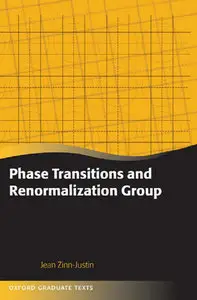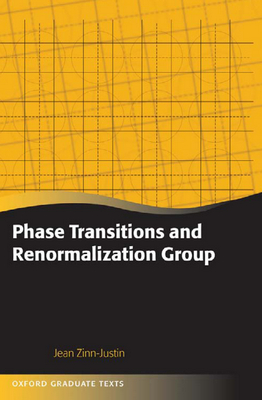"Phase Transitions and Renormalization Group" by Jean Zinn-Justin
OxUn Press | 2007 | ISBN: 0199227195 9780199227198 | 465 pages | PDF | 5 MB
OxUn Press | 2007 | ISBN: 0199227195 9780199227198 | 465 pages | PDF | 5 MB
This work tries to provide an elementary introduction to the notions of continuum limit and universality in statistical systems with a large number of degrees of freedom. Author discusses the renormalization group in the context of various relevant field theories.
The existence of a continuum limit requires the appearance of correlations at large distance, a situation that is encountered in second order phase transitions, near the critical temperature. In this context, we will emphasize the role of gaussian distributions and their relations with the mean field approximationand Landau's theory of critical phenomena.
To analyze the unusual situation, a new concept is required: the renormalization group, whose fixed points allow understanding the universality of physical properties at large distance, beyond mean-field theory. In the continuum limit, critical phenomena can be described by quantum field theories. In this framework, the renormalization group is directly related to the renormalization process, that is, the necessity to cancel theinfinities that arise in straightforward formulations of the theory.
Contents
1 Quantum field theory and the renormalization group
2 Gaussian expectation values. Steepest descent method
3 Universality and the continuum limit
4 Classical statistical physics: One dimension
5 Continuum limit and path integrals
6 Ferromagnetic systems. Correlation functions
7 Phase transitions: Generalities and examples
8 Quasi-Gaussian approximation: Universality, critical dimension
9 Renormalization group: General formulation
10 Perturbative renormalization group: Explicit calculations
11 Renormalization group: N-component fields
12 Statistical field theory: Perturbative expansion
13 The σ4 field theory near dimension 4
14 The O(N) symmetric (φ2)2 field theory in the large N limit
15 The non-linear σ-model
16 Functional renormalization group
Appendix
Bibliography
Index
with TOC BookMarkLinks



